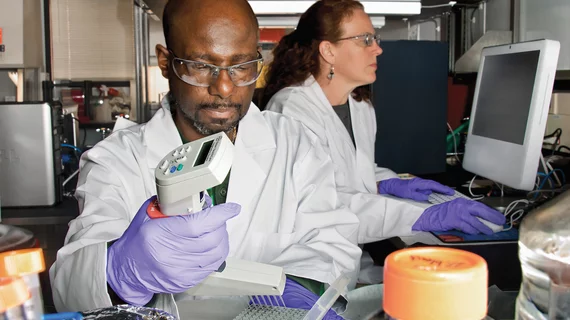AI right at home in cancer research, but associated clinical improvements slow to show
In cancer research settings, AI has shown strong capabilities for predicting risk, recurrence and survivability over the past 10-plus years. Yet real-world cancer mortality remains largely unchanged to the present day. Why is that?
For clues, researchers in Asia searched three major medical research databases using terms like cancer diagnosis, early detection, artificial intelligence, machine learning and deep learning.
Concentrating on studies published between 2009 and 2021, they analyzed 185 papers out of 350 returned in the initial search.
Their overall conclusion:
Although multiple techniques recommended in the literature have achieved great prediction results, cancer mortality has not been reduced. Thus, more extensive research to deal with the challenges in the area of cancer prediction is required.”
Archives of Computational Methods in Engineering has published the work, which was lead-authored by Yogesh Kumar, PhD, of Indus Institute of Technology & Engineering in India. Senior author is Yu-Chen Hu, PhD, of Providence University in Taiwan.
En route to offering the broad observation and recommendation, Kumar and co-authors outline findings from five interesting sub-investigations they conducted, as follows:
1. Which learning approach has extensively provided appreciable cancer-prediction results?
Deep learning classifiers have dominated over machine learning models across the field of cancer research, the authors report. The top types of AI applied to the task have been convolutional neural networks (41% of the analyzed studies), followed by neural networks (10%), support vector machines (9%), deep neural networks (8%) and ensemble learning techniques (8%).
2. Which body sites and training data have been explored most extensively?
Breast cancer research has led the way, with 22 studies. Next come kidney (17); brain, colorectal and prostate (15 each); cervical and liver (14 each); lung and skin (13 each). Stomach, thyroid and other types round out the field.
Meanwhile most of the analyzed studies used MRI (25%) or CT (23%). These were distantly followed by pap smear tests, mammograms, pathology slides, and dermoscopic and endoscopic images.
3. In which years were most of the cancer prediction studies published?
The preponderance of the papers appeared in 2020 (35 studies), 2019 (32) and 2018 (30). The current year may continue the growth trend, although Kumar and colleagues counted only 10 as of their cutoff month, last April.
4. Which sorts of images have proven the most reliably predictive?
Here the authors answer by deferring to inference. Convolutional neural networks can be applied with different datasets and “have been used to predict almost every type of cancer such as brain, colorectal, skin, thyroid and lungs,” they reiterate. “Also, ensemble learners have been used with almost every kind of cancer.”
5. What are the major specific challenges faced by researchers constructing AI-based prediction models?
Kumar and colleagues outline seven: limited data size, high dimensionality, class imbalance, computational time, efficient feature selection, model generalizability and clinical implementation.
On the latter challenge, the authors comment that AI-based models have “proved their dominance in cancer research; still, the practical implementation of the models in the clinics is not incorporated. These models need to be validated in a clinical setting to assist the medical practitioner in affirming the diagnosis verdicts.”
The study is available in full for free.

